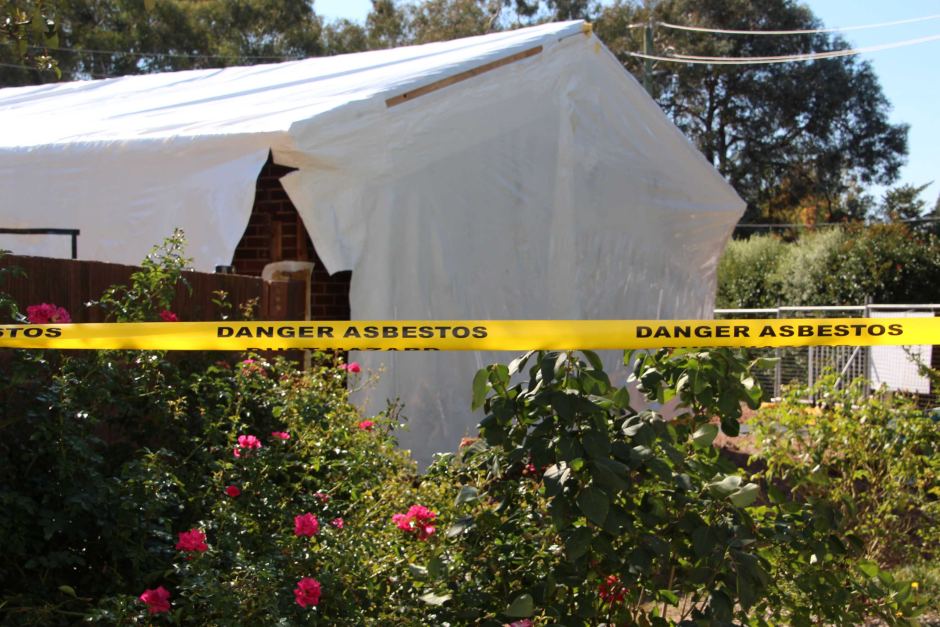The ACT’s Asbestos Taskforce has passed another milestone, with the demolition of more than 100 homes in Canberra.
More than 800 blocks have been surrendered and the focus of the ACT Government’s buyback program focus has now shifted to the suburb of Kambah, where the largest number of asbestos blocks are located.
The Taskforce has also begun using a new technique to secure any loose asbestos fibres, prior to demolition.
At a cluster of homes in Hiles Place, the properties are being shrink-wrapped using a giant roll of plastic, about 30 metres long and 10 metres wide.
Steve Brady from the head contractor Caylamax said after wrapping the building, his team would go inside and remove loose furnishings, cover the surfaces in paint, vacuum Mr Fluffy fibres from behind the walls and ceilings and then demolish the building.
Mr Brady said it was a very effective method.
“This particular material is used for encapsulating all sorts of heavy machinery and came from the mining industry originally,” he said.
“The Air Force have used it, the Army have used it, anywhere where large machinery is being plonked on a block of land over time.
“What we’ve done is said we can see the application in a place like Canberra.”
WorkSafe Senior Manager Matt Craig-Barry said the process was safer and faster than using smaller plastic strips, especially when working on a cluster of Mr Fluffy homes.
“The actual time it takes to complete the encapsulation is about 60 per cent less than doing it in the strip method and the working at heights is reduced by 70 per cent,” he said.
“The benefits are that there’s minimal disruption.
“Work is intensified in the area for a shorter period of time.”
Asbestos Taskforce head Andrew Kefford said the program drew on knowledge from across Australia.
“What we’re seeing is firms from as far away as Queensland and Western Australia working with us and bringing new technologies, new approaches which are more efficient on a program of this scale,” he said.
Mr Kefford said the demolition aspect of the buyback scheme was progressing more quickly than expected.
“We’re tracking at this stage ahead of where we are intending to be and so people whose houses are scheduled to be demolished in the second half of next year are already having contact from us,” he said.
“This is consistent with what we said we’d do – we’d work to complete this program as safely as we can.”
Source: ABC.net.au



